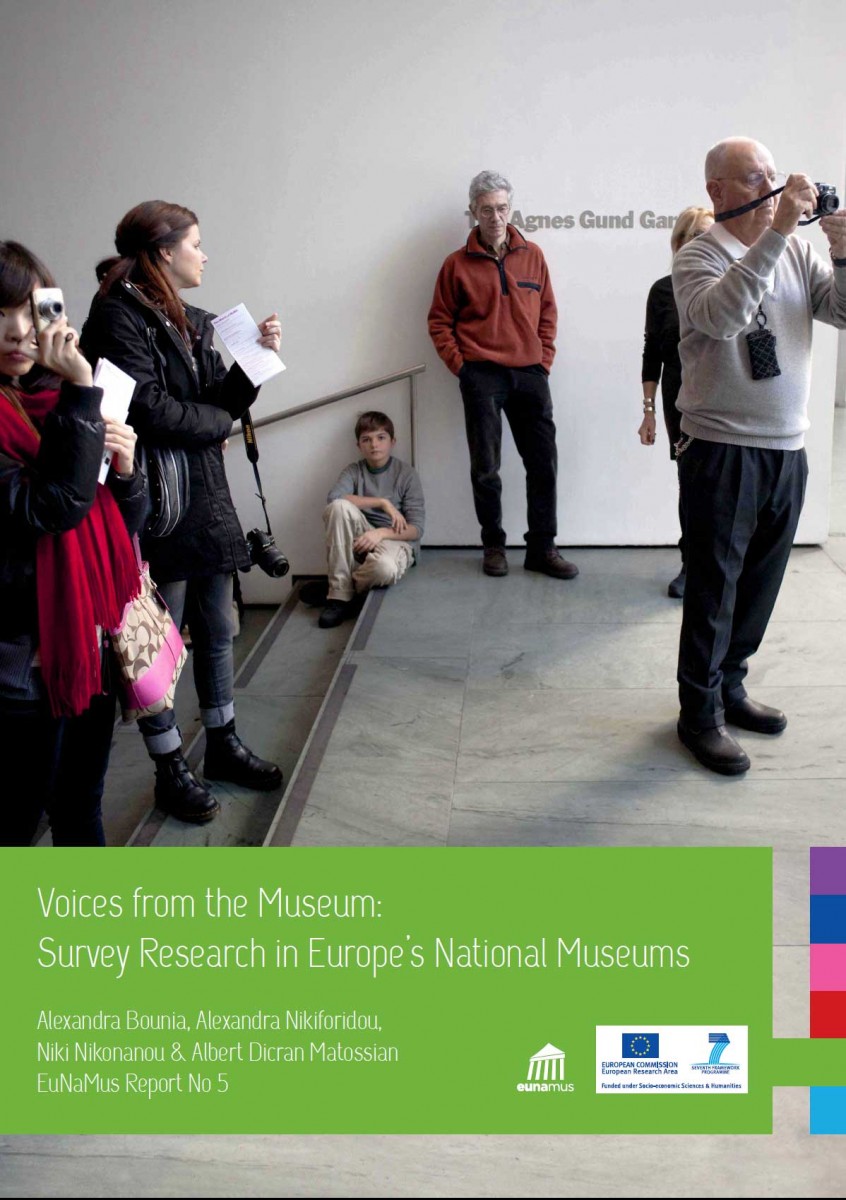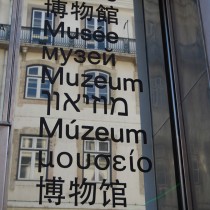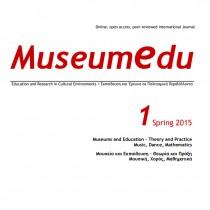Alexandra Bounia, Alexandra Nikiforidou, Niki Nikonanou & Albert Dicran Matossian, Voices from the Museum: Survey Research in Europe’s National Museums, series EuNaMus Report 5, Linköping University Electronic Press, 2012.
This report presents visitor perspectives on what it means to be a national museum and relations between national museums and identities. Overall, visitors expect national museums to help them build national consciousness and collective identity, when it comes to nationals; and help them understand difference and similarity when it comes to non-nationals/visitors to the nation. The survey suggests that national museums, in order to “deserve” the name, need to present the complete story of the nation. In terms of identity, national identity is prioritized by most visitors as their primary identity. There are three categories of self-proclaimed “national identity”: a single national identity; a hybrid national identity (two or more heritage roots); and a trans-national identity, which places an emphasis on European, cosmopolitan ideals, universal humanity or the importance of the individual in determining identity. Often national identity is complemented with other identities: class, gender, education, origins of some sort. The findings suggest that national museums seem to be well located to express those ideas as well, since they provide historical models with which people can understand and identify themselves.
The report is produced within the three-year research programme, EuNaMus – European National Museums: Identity Politics, the Uses of the Past and the European Citizen, coordinated at Tema Q at Linköping University (www.eunamus.eu). EuNaMus explores the creation and power of the heritage created and presented at European national museums to the world, Europe and its states, as an unsurpassable institution in contemporary society. National museums are defined and explored as processes of institutionalized negotiations where material collections and displays make claims and are recognized as articulating and representing national values and realities. Questions asked in the project are why, by whom, when, with what material, with what result and future possibilities are these museums shaped.




